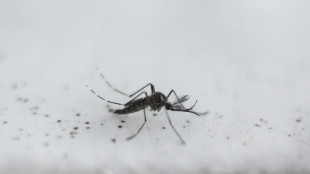
| RYCEF | 1.15% | 6.93 | $ | |
| CMSC | 0.22% | 24.624 | $ | |
| RELX | -0.13% | 44.98 | $ | |
| GSK | -1.32% | 33.25 | $ | |
| VOD | -0.96% | 8.835 | $ | |
| RBGPF | -0.74% | 59.75 | $ | |
| NGG | 0.57% | 63.26 | $ | |
| BTI | -0.36% | 36.55 | $ | |
| RIO | -0.4% | 61.87 | $ | |
| BP | -1.66% | 28.94 | $ | |
| CMSD | -0.21% | 24.39 | $ | |
| BCC | 1.02% | 141.54 | $ | |
| SCS | -0.76% | 13.1 | $ | |
| JRI | 0.98% | 13.23 | $ | |
| BCE | -0.67% | 27.05 | $ | |
| AZN | 0.27% | 63.56 | $ |

Science of sleep: Why a good night's rest gets harder with age
It's well known that getting a good night's sleep becomes more difficult as we age, but the underlying biology for why this happens has remained poorly understood.
A team of US scientists has now identified how the brain circuitry involved in regulating sleepfulness and wakefulness degrades over time in mice, which they say paves the way for better medicines in humans.
"More than half of people 65 and older complain about the quality of sleep," Stanford University professor Luis de Lecea, who co-authored a study about the finding published Thursday in Science, told AFP.
Research has shown that sleep deprivation is linked to an increased risk of multiple poor health outcomes, from hypertension to heart attacks, diabetes, depression and a build up of brain plaque linked to Alzheimer's.
Insomnia is often treated with a class of drugs known as hypnotics, which include Ambien, but these don't work very well in the elderly population.
For the new study, de Lecea and colleagues decided to investigate hypocretins, key brain chemicals that are generated only by a small cluster of neurons in the brain's hypothalamus, a region located between the eyes and ears.
Of the billions of neurons in the brain, only around 50,000 produce hypocretins.
In 1998, de Lecea and other scientists discovered that hypocretins transmit signals that play a vital role in stabilizing wakefulness.
Since many species experience fragmented sleep as they grow old, it's hypothesized that the same mechanisms are at play across mammals, and prior research had shown degradation of hypocretins leads to narcolepsy in humans, dogs and mice.
The team selected young (three to five months) and old mice (18 to 22 months) and used light carried by fibers to stimulate specific neurons. They recorded the results using imaging techniques.
What they found was that the older mice had lost approximately 38 percent of hypocretins compared to younger mice.
They also discovered that the hypocretins that remained in the older mice were more excitable and easily triggered, making the animals more prone to waking up.
This might be because of the deterioration over time of "potassium channels," which are biological on-off switches critical to the functions of many types of cells.
"The neurons tend to be more active and fire more, and if they fire more, you wake up more frequently," said de Lecea.
Identifying the specific pathway responsible for sleep loss could lead to better drugs, argued Laura Jacobson and Daniel Hoyer, of Australia's Florey Institute of Neuroscience and Mental Health, in a related commentary article.
Current treatments, such as hypnotics, "can induce cognitive complaints and falls," and medicines that target the specific channel might work better, they said.
These will need to be tested in clinical trials -- but an existing drug known as retigabine, which is currently used to treat epilepsy and which targets a similar pathway -- could be promising, said de Lecea.
M.Kieffer--LiLuX



